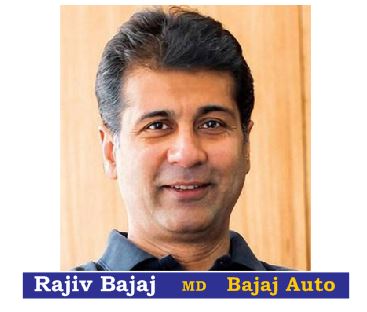
Editorial July 2020
- जुलाई 24, 2020
- 0
Three years of GST: Still a long way to go for ‘Good and Simple Tax’
At the launch of goods and services tax (GST) in 2017, then finance minister Arun Jaitley had hoped that the historic indirect tax reform would meet five broad objectives: Checking inflation, easing the compliance burden, making tax evasion difficult, boosting GDP, and bolstering government resources.
Since then, three of those are on shaky ground, but hopes on the other two — inflation control and curbing tax evasion —have not been entirely belied. However, experts say it has not turned out to be what Prime Minister Narendra Modi called it — “good and simple tax”.
To add to the structural complexities related to technology and multiple tax rates, the pandemic has thrown a new challenge, with business activity at a historic low. In the fourth year of GST, key areas of emphasis will revolve around strengthening the IT infrastructure, rationalising multiple GST slabs and rates, easing the compliance burden, and reworking the compensation mechanism for states, experts say.
M S Mani, partner, Deloitte India, said while three years of GST had brought down several complications of multiple taxes such as tax cascading for businesses, some intended benefits such as tax simplicity, lowering the compliance burden etc should possibly be taken up.
GST compliance has turned out to be a key trouble spot for taxpayers, causing loss of revenue for the government. In view of technical glitches on the GSTN portal, the government had suspended the detailed return forms — GSTR 2 (purchase) and GSTR 3 (sales purchase return) — in November 2017.
Union Finance Minister Nirmala Sitharaman has acknowledged there have been technical glitches on the GST Network.
“We are aware of issues of the system not being able to bear the load, and when more than 100,000 people tried to access the system, it either stalled or delayed or just did not respond,” she had said.
Infosys Chairman Nandan Nilekani was called to a meeting of the GST Council in March to explain the technical glitches. The company provides the technology backbone for the GSTN. Expected to be introduced in July 2019, the proposed simplified GST form has been deferred many a time to later this year due to lack of technical preparedness.
With e-invoicing, the new return mechanism, the centralised Advance Ruling Appellate Authority, etc, on the anvil, there is a lot to look forward to under GST 4.0. Industry would hope the implementation strategy of the government is well thought through.”
सुरेश बाहेती
9896436666
संपादकीय
जीएसटी बेहतर और सरल कर की राह
वस्तु एवं सेवा कर (जीएसटी) जब 2017 में पेश किया गया तो तत्कालीन वित्त मंत्री अरुण जेटली ने उम्मीद जताई थी कि ऐतिहासिक अप्रत्यक्ष कर सुधार पेश किए जाने से 5 प्रमुख मकसद पूरे होंगे-महंगाई पर लगाम लगेगी, अनुपालन बोझ कम होगा, कर चोरी कठिन हो जाएगी, जीडीपी को बल मिलेगा और सरकार के राजस्व के स्त्रोत मजबूत होंगे। जीएसटी लागू हुए 3 साल पूरे हो गए। जीएसटी लागू करने के मकसद हिचकोले खा रहे हैं।
तकनीक और कर की कई दरों से जुड़ी ढांचागत जटिलताओं से जूझ रहे कारोबारियों पर वैश्विक महामारी कोरोनावायरस की मार पड़ी और इन चुनौतियों ने कारोबारी गतिविधियों को ऐतिहासिक निचले स्तर पर पहुंचा दिया। विशेषज्ञों का कहना है कि जीएसटी के चैथे साल में प्रवेश पर आईटी इन्फ्रास्ट्रक्टरर को मजबूत करने, कई जीएसटी ढांचों व दरों को तार्किक बनाने, अनुपालन बोझ सरल करने और राज्यों के लिए मुआवजा की व्यवस्था पर फिर से काम करने की जरूरत है।
जीएसटी के तीन साल के दौरान कई करों की कुछ जटिलताएं, जहां कम हुई हैं, कारोबार में कर वंचना, की करे आसान करने, अनुपालन बोझ कम करने आदि पर भविष्य में काम करने की जरूरत है।
करदाताओं के लिए जीएसटी अनुपालन मुख्य समस्यास बन गई है, इसकी वजह से सरकार को भी राजस्व का नुकसान उठाना पड़ रहा है। जीएसटीएन पोर्टल पर तकनीकी दिक्कतों को देखते हुए सरकार ने जीएसटीआर-2 (खरीद) और जीएसटीआर-3 (बिक्री खरीद रिटर्न) को नवंबर 2017 में रद्द कर दिया था। जीएसटी नेटवर्क में लगातार आने वाली तकनीकी बाधाओं का मसला वित्त मंत्री निर्मला सीतारमण के संज्ञान में है। उन्होंने कहा था, ‘हमें वह जानकारी है कि जब एक लाख से ज्यादा लोग एक साथ सिस्टम एक्सेस करते हैं तो बोझ न उठा पाने जैसी दिक्कतें आती हैं। या तो सिस्टम ठहर जाता है, या समय लगता है या कोई प्रतिक्रिया नहीं मिलती है।’ दरअसल इन्फोसिस के चेयरमैन नंदन नीलेकणी को परिशद की मार्च में हुई बैठक में तकनीकी खामियों को लेकर बुलाया गया था। आईटी कंपनी जीएसटीएन के लिए टेक्नोलाॅजी समर्थन मुहैया कराती है।
प्रस्तावित सरल जीएसटी फाॅर्म जुलाई 2019 में पेश किया जाना था, लेकिन तकनीकी तैयारियों में खामी की वजह से इसे कई बार टाला गया है।
ई-इनवाइसिंग, नई रिटर्न व्यवस्था, केंद्रकृत एडवांस रूलिंग एपीली प्राधिकरण आदि जीएसटी-4.0 में पेश किया गया है, जो आगे की राह दिखाता है। उद्योग को भरोसा करना चाहिए कि सरकार की इसे लागू करने की रणनीति सोच विचार कर बनाई गई है, जिससे शुरुआती चुनौतियों से बचा जा सके।’
सुरेश बाहेती
9896436666
































































